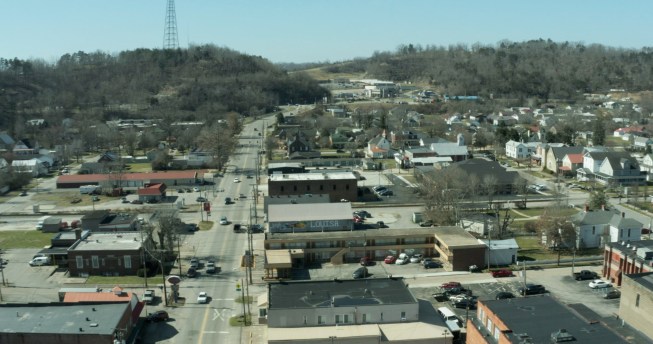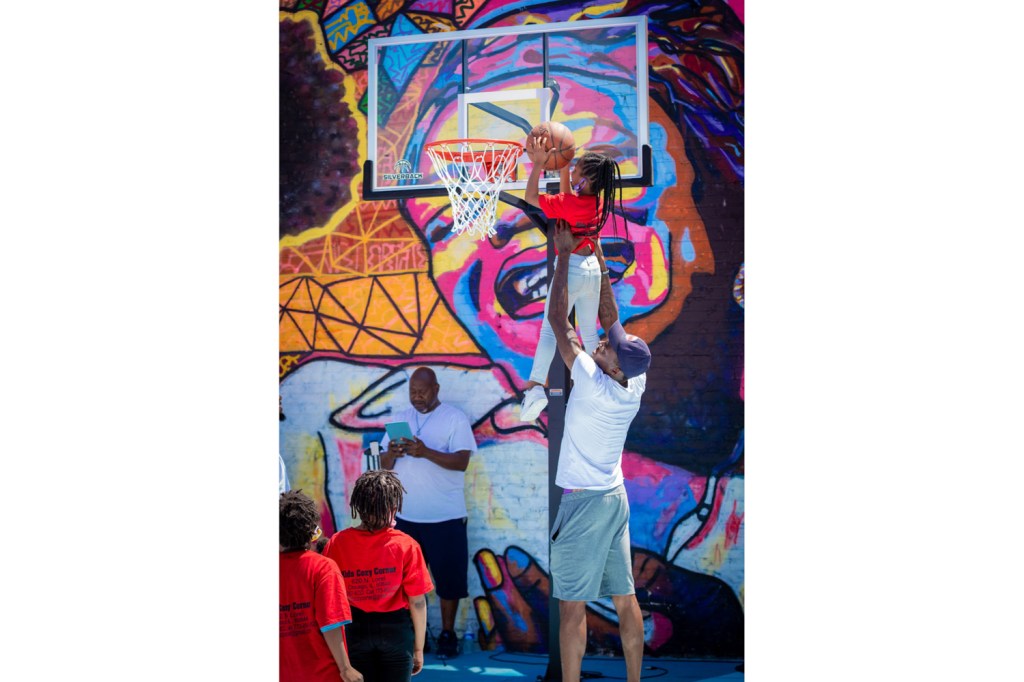A vacant lot in Chicago. An outdated library in rural Kentucky. The AIA Film Challenge 2021 winning entries demonstrate the power of design to transform neglected spaces like these into thriving community hubs.
Grand Prize winner POP Courts!—by filmmaker Brodie Kerst and the Lamar Johnson Collaborative (LJC), the name of both the project and the film—chronicles a project to bring outdoor amenities, economic opportunity, and community gathering space to Chicago’s “Soul City Corridor.” Key to the city’s Invest SouthWest initiative, POP Courts! is part of a larger vision to help develop Chicago’s underinvested communities.
Community Engagement Was Central to Designers’ Approach
“We didn’t want to come in as ‘know-it-all’ architects who knew what was best for this community,” says architect Alan Barker, AIA. “We knew the community should have a say and be able to influence this space that they will take ownership of.”
Working under a tight budget and time constraints, POP Courts! architects and designers relied on close collaboration with community leader Vanessa Stokes.
“What we had was relationships and open communication, and we had to lean on them that much more,” Barker says. “That was the strength that brought us through.”
The space is divided into three zones, or “courts,” where activities can “pop” up organically. One zone is a basketball court that converts seamlessly into an event space with the addition of a stage or DJ booth. The next zone, a gravel drive, hosts food trucks and farmers markets—spurring commerce. A soft space marks the third zone with shaded lawn seating and playground-style spin chairs that appeal to all ages.
“Young people have a place where they can be, and be safe and play,” Stokes said. “In a lot of communities, those things are taken for granted.”
Project leaders engaged residents through events like a ribbon-cutting and a community paint day. But no invitation was needed. Neighbors immediately gravitated to the space, including daycare students down the block.
“Daycare kids came around the corner, and their faces changed automatically,” Barker recalls. “They ran onto the turf and knew exactly how to engage the spin chairs. This was a space the kids instinctively knew how to use, and it’s an amenity they didn’t have previously. A space that people could come occupy naturally is what we were trying to set up.”
The community’s immediate enthusiasm made Kerst’s job as a filmmaker that much easier. “We didn’t have to stage anything,” he says. “A testament to the success of the community involvement is when we went out there to shoot, kids ran over to the basketball court and started playing almost immediately.”
The lesson? “Even though it’s small, it had a huge impact,” Kerst says. “Impactful projects don’t have to be huge and grandiose and take years and years to design and execute. It can be done in six months, in a small park, and have a big impact.”
The same principle is on display in People’s Choice Award winner A Jewel in Appalachia. Directed by Alex Michl, this film documents OPN Architects’ renovation of Lawrence County Public Library in Louisa, Ky.

Louisa, Kentucky, the site of People’s Choice Award Winner A Jewel in Appalachia, was impacted by the loss of coal jobs
According to library director Carlie Pelfrey, Louisa is a small town (just more than 5,000 residents) where “everybody knows everybody” but “jobs and cultural opportunities are scarce.” Hit hard by the decline of coal jobs, the Appalachian town relies on its library as “a place of lifelong learning and the focal point of our community”—hosting everything from classes to a summer meal program for school children.
But the existing 1960s structure, dark and disjointed, was ill-equipped to meet the community’s needs. OPN project architect Toby Olsen, aia, embraced the opportunity to transform the library into an inviting, multifunctional space.
“The building has to operate essentially like a Swiss Army knife that provides multipronged tools that allow us to create a space that is able to adjust with needs,” he explains. “They wanted the freedom to grow, to flex their programming muscles, and the freedom to be who they are. And we knew that this building has to be for all community members. Every person needs to be welcomed and safe in this space.”
Olsen and his team focused on introducing light and transparency— opening up the space and creating a children’s area as a focal point, “a jewel box that shows off the wonderful things that are happening in the library.”
Michl’s aerial footage emphasizes how the library stands out as a beacon while still blending into the surrounding community. “This neighborhood is socioeconomically challenged, but you’re sitting in this space that’s beautiful, that’s a good learning environment, and a good place to be,” he notes. “You could see it was something elevated above the rest of the area but also very ingrained into the site and a part of the community already.”
As a library specialist, Olsen understands the unique potential of these public spaces to support equity and opportunity. Libraries, he says, are “the most democratizing of all spaces and places where you can get access to information, share ideas, talk and learn, be entertained, and find joy.” His experiences growing up in a small town also informed his approach in Louisa. “I understand what it’s like to live in a small, rural community,” he says. “For many growing up in that environment, you hear things like ‘Oh, we don’t deserve that; that can’t happen here.’ It’s important that we rectify that when we go into rural communities. Just because it’s a small town doesn’t mean you don’t deserve the best we can possibly deliver for your budget or bring you services that you couldn’t imagine, or think could only happen in a large city.”
For Michl, the Louisa project also resonated. He says that while most media coverage of architecture emphasizes “high profile, high end projects … what the Film Challenge does is give a platform to emphasize how architecture impacts a community, people, families.”
Kerst agrees. “Architects are great at communicating to other architects,” he explains. “But if you’re able to make a video that I can show my mom, and she’ll say ‘I get that—that’s why design is important,’ it’s that much more powerful.”
Rural or urban, indoor or outdoor, blank slate or renovation—these two projects are proof that, with collaboration and creativity, architects can create a zero-carbon, resilient, healthy, just, and equitable built environment, community by community.
